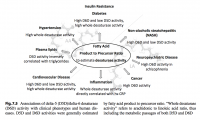Obi-wan
Member
- Joined
- Mar 16, 2017
- Messages
- 1,120
Fats and oils rich in stearic acid are more abundant in animal fat (up to 30%) than in vegetable fat (typically <5%). The important exceptions are cocoa butter and shea butter, where the stearic acid content (as a triglyceride) is 28–45%. -Wikipedia


